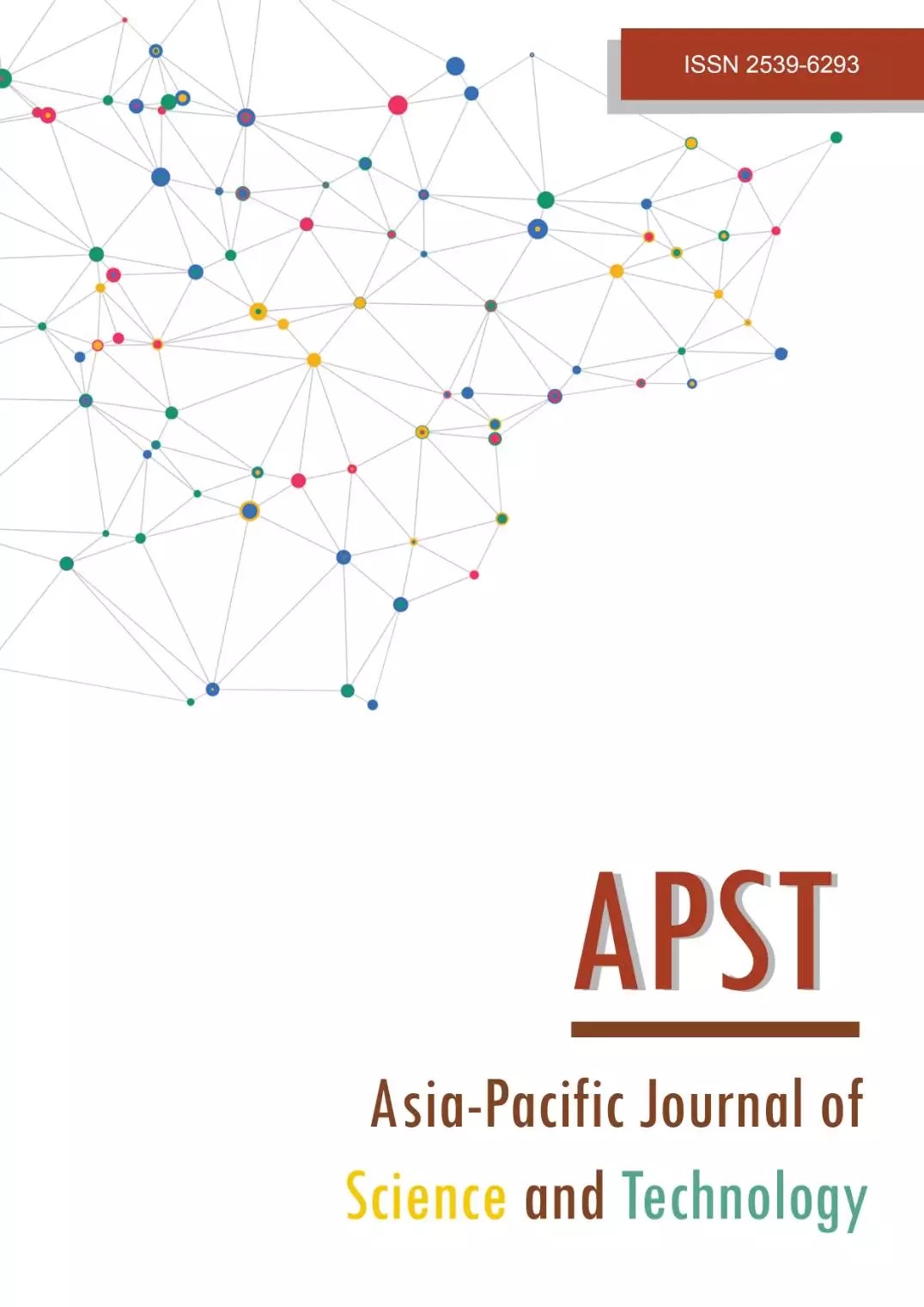Anuwat Attachaiyawuth
Department of Civil Engineering, Faculty of Engineering at Sriracha, Kasetsart University Sriracha Campus, Chonburi, Thailand
Nipat Puthipad
School of Systems Engineering, Kochi University of Technology, Kochi, Japan
Masahiro Ouchi
School of Systems Engineering, Kochi University of Technology, Kochi, Japan
DOI: https://doi.org/10.14456/apst.2023.17
Keywords: Air-SCC Air size distribution Stability improvement Specific surface area Stability of entrained air
Abstract
Self-compactability enhancement by small bubbles has been developed for a decade. Those effective bubbles in concrete need to be ensured its stability. A full-scale experimental study was conducted on the stability of entrained air in air-enhanced self-compacting concrete (Air-SCC). The flow diameter and V-funnel time were measured based on the air content in the concrete immediately and 1 h after mixing. An air void analyzer was used to measure the diameter size of the entrained bubbles at the fresh stage. A water-dividing mixing method along with longer mixing time were used to increase the volume of small bubbles. The results indicated that the water-dividing method and 180 s mixing with a simple method effectively entrained small bubbles in mixtures using superplasticizer blended with retarder. That effective procedure could increase volume of small bubbles approximately 3.0%. Fine bubbles were defined by the high value of specific surface area (α > 20 mm2/mm3). Concrete containing air bubbles with a high a value had a reduction rate less than 1% of air content at 1 h. The authors have succeeded to maintain the air lost less than 1% of the designed value as this affected both the self-compactability and freeze-thaw resistance of concrete. These findings will be beneficial in designing or producing self-compacting concrete, especially in a cold environment.
How to Cite
Attachaiyawuth, A., Puthipad, N., & Ouchi, M. (2023). Stability improvement of bubbles by entraining fine air in self-compacting concrete proportioned at factory scale. Asia-Pacific Journal of Science and Technology, 28(02), APST–28. https://doi.org/10.14456/apst.2023.17
References
Okamura H, Ouchi M. Self-compacting concrete. J Adv Concr Technol. 2003;1(1):5-15.
Ashish DK, Verma SK. Determination of optimum mixture design method for self-compacting concrete: validation of method with experimental results. Constr Build Mater. 2019;217:664-678.
Mustapha FA, Sulaiman A, Mohamed RN, Umara SA. The effect of fly ash and silica fume on self-compacting high-performance concrete. Mater Today Proc. 2021;39:965-969.
Jain A, Gupta R, Chaudhary S. Sustainable development of self-compacting concrete by using granite waste and fly ash. Constr Build Mater. 2020;262:120516.
Promsawat P, Chatveera B, Sua-iam G, Makul N. Properties of self-compacting concrete prepared with ternary portland cement-high volume fly ash-calcium carbonate blends. Case Stud Constr Mater. 2020;13:e00426.
Siddique R. Properties of self-compacting concrete containing class F fly ash. Mater Des. 2011;32(3):1501-1507.
Sua-iam G, Makul N. Incorporation of high-volume fly ash waste and high-volume recycled alumina waste in the production of self-consolidating concrete. J Clean Prod. 2017;159:194-206.
Yang S, Zhang J, An X, Qi B, Shen D, Lv M. Effects of fly ash and limestone powder on the paste rheological thresholds of self-compacting concrete. Constr Build Mater. 2021;281:122560.
Barbhuiya S. Effects of fly ash and dolomite powder on the properties of self-compacting concrete. Constr Build Mater. 2011;25(8):3301-3305.
Grünewald S, Walraven JC. Properties of fibre reinforced SCC. In: Siddique R, editor. Self-compacting concrete: materials, properties and applications. 1st ed. Cambridge: Woodhead Publishing; 2020, p. 309-370.
Pansuk W, Nguyen TN, Sato Y, Den Uijl JA, Walraven JC. Shear capacity of high performance fiber reinforced concrete I-beams. Constr Build Mater. 2017;157:182-193.
Wang W, Shen A, Lyu Z, He Z, Nguyen KTQ. Fresh and rheological characteristics of fiber reinforced concrete-a review. Constr Build Mater. 2021;296:123734.
Turk K, Bassurucu M, Bitkin RE. Workability, strength and flexural toughness properties of hybrid steel fiber reinforced SCC with high-volume fiber. Constr Build Mater. 2021;266:120944.
Jongvivatsakul P, Attachaiyawuth A, Pansuk W. A crack-shear slip model of high-strength steel fiber-reinforced concrete based on a push-off test. Constr Build Mater. 2016;126:924-935.
Daungwilailuk T, Pheinsusom P, Pansuk W. Uniaxial load testing of large-scale 3D-printed concrete wall and finite-element model analysis. Constr Build Mater. 2021;275:122039.
Attachaiyawuth A, Rath S, Tanaka K, Ouchi M. Improvement of self-compactability of air-enhanced self-compacting concrete with fine entrained air. J Adv Concr Technol. 2016;14(3):55-69.
Puthipad N, Ouchi M, Attachaiyawuth A. Effects of fly ash, mixing procedure and type of air-entraining agent on coalescence of entrained air bubbles in mortar of self-compacting concrete at fresh state. Constr Build Mater. 2018;180:437-444.
Puthipad N, Ouchi M, Rath S, Attachaiyawuth A. Enhancement in self-compactability and stability in volume of entrained air in self-compacting concrete with high volume fly ash. Constr Build Mater. 2016;128:349-360.
Puthipad N, Ouchi M, Rath S, Attachaiyawuth A. Enhanced entrainment of fine air bubbles in self-compacting concrete with high volume of fly ash using defoaming agent for improved entrained air stability and higher aggregate content. Constr Build Mater. 2017;144:1-12.
Ouchi M, Kameshima K, Attachaiyawuth A. Improvement in self-compacting properties of fresh concrete by eliminating large air bubbles using an antifoaming agent. J Adv Concr Technol. 2017;15(1):10-18.
Attachaiyawuth A, Puthipad N, Ouchi M. Effects of air-entraining agent, defoaming agent and mixing time on characteristic of entrained bubbles in air-enhanced self-compacting concrete mixed at concrete plant. Eng J. 2022;26(2):37-48.
Rath S, Puthipad N, Attachaiyawuth A, Ouchi M. Critical Size of entrained air to stability of air volume in mortar of self-compacting concrete at fresh stage. J Adv Concr Technol. 2017;15(1):29-37.
Rath S, Ouchi M, Puthipad N, Attachaiyawuth A. Improving the stability of entrained air in self-compacting concrete by optimizing the mix viscosity and air entraining agent dosage. Constr Build Mater. 2017;148:531-537.

Published:
License
This work is licensed under a Creative Commons Attribution-NonCommercial-NoDerivatives 4.0 International License.
